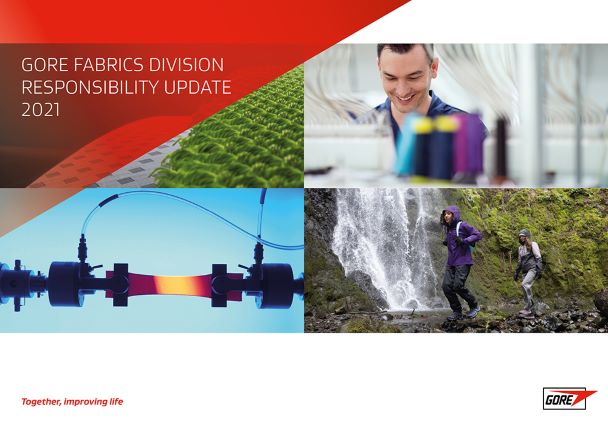
WL Gore and Associates (Gore) has released its 2021 Responsibility Update for the Fabrics Division in which it hails the integration of its sustainability framework that was established in 2020 to support the implementation of its evolved sustainability strategy.
Gore says the framework helped its Fabrics Division set overall strategic direction for 2021 and beyond, in addition to facilitating prioritisation of efforts and resources on the most impactful initiatives.
Among the highlights over the course of the last year are two material innovations, one which Jacques René, Gore Fabrics Division leader says is perhaps the most important innovation since the launch of the first Gore-Tex product 40 years ago.
The new expanded polyethylene (ePE) was introduced by Gore as a complementary material platform to serve as the basis for its membrane technologies. The new membrane technology is for use in apparel and footwear and will appear in Gore-Tex brand consumer products beginning in the autumn/winter 2022 season.
The other material innovation highlight is Gore-Tex ExtraGuard, described as an innovative upper technology with lower environmental footprint for a new class of safety footwear.
Additional highlights from Gore’s sustainability journey last year include:

US Tariffs are shifting - will you react or anticipate?
Don’t let policy changes catch you off guard. Stay proactive with real-time data and expert analysis.
By GlobalData• Gore Fabrics Division conducted another full assessment of its total carbon footprint and joined forces with its supply chain partners to reduce carbon emission of the raw materials.
• Gore Fabrics Division obtained Global Recycled Standard (GRS) certification for its fabric plants in Putzbrunn (Germany) and Shenzhen (China).
• Gore Fabrics Division further increased transparency in its performance and efforts to reduce the environmental impacts of its fabric plants via the Higg Facility Environmental Module (FEM). While the manufacturing sites in Shenzhen and Elk Mills (USA) maintained their performance levels, the Putzbrunn plant significantly exceed its total environmental score.
• Gore Fabrics Division also continued to verify social compliance at its manufacturing sites via the Higg Facility Social & Labor Module (FSLM) and benchmarked social and labour conditions in their plants against all other facilities assessed by using the Higg FSLM. Results show that the overall performance of all three Gore Fabrics Division manufacturing plants in 2021 clearly ranked above the industry median overall.
“These initiatives and achievements demonstrate that in 2021 the Gore Fabrics Division continued to make a difference to our planet and the people living on it. Using decades of scientific knowledge, intensive research and development, as well as a strict testing regime, we remain committed to drive environmentally improved material innovations that deliver an optimized combination of high performance with a lower environmental footprint”, says Ross MacLaine, sustainability leader of Gore Fabrics Division.
Click here to access the report in full.



